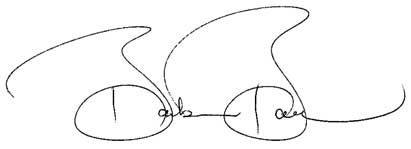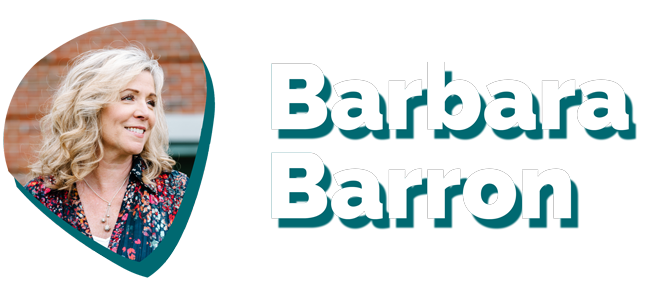April 7th, 2021 by Barbara Barron

Let’s begin with a definition of terms.
What is a “major gifts program?” A major gift program is an ongoing part of a mature and robust advancement program. It is different from the Annual Fund or a capital campaign in that it does not necessarily have a specific timeline, launch, or end date. It is not something we attempt to get everyone to participate in. It is designed narrowly, intentionally. So it usually operates under the radar of most people in our school’s community.
A major gifts program is comprised of specific, often highly tangible projects that require big funding. Projects that exist outside of the annual operating budget. I like to describe them as being the thing(s) that the school’s program wants to do, as opposed to what it must have to function. These projects target the ways a school intends to grow, expand, even flourish. It fixes vitally important issues but rarely are these “urgent” issues.
What kind of projects are best for a “major gifts program”? A major gifts program is most often used to fund something called capital improvements or a capacity-building opportunity.
Take the long-overdue renovation of the faculty lounge, for example. This high traffic area – pre and post-Covid – says a lot about the ways we value, or don’t value, our teachers. New carpet, appliances, seating, lighting – these are all capital improvements. They will make a world of difference to the people that touch our children’s lives. Daily. It is not an urgent improvement, but I’d argue that it is a vital one.
Other times, a capital improvement is the overhaul or expansion of a particular program. Maybe your school needs to broaden the foreign language program from three to four offerings. To do that would mean hiring a professional and building out a curriculum. Both are not currently in the budget. Enhancing your curriculum like this would require funding for a couple of years until it gets its legs. The operating budget will ultimately be able to support this program as enrollment increases but in the interim, a “capacity build” like this will be needed to get it up on its feet. Another vital but not urgent improvement.
There are more examples of ways major gift initiatives can make a big difference. I’ve raised major gift dollars to invest in donor research – in other words, discovering who and where our potential supporters are. I’ve raised money to purchase a new database so that we can better organize and track our activities. I’ve even raised money to reduce a school’s debt. The trick is that a major gift project needs to, well, be major. It needs to have the potential to have a significant impact. That puts it on our project short list.
How many projects should we be working on at any given time? Typically you want to have 3 to 5 projects at any moment so you have a short menu to offer to donors (more on that in a second). Each project should be pretty expensive but not all are the same level of expensive. Think range. And remember, they should be vital, but not urgent. Work with your Director of Finance, Head of School, and other key leaders to identify the most exciting, impact-heavy projects you can. Look for variety.
Now that you have a couple of great ideas and know the price range for each, it’s time to go find some angels to bring them to life. That’s where the program gets its energy. This is where all your thoughtful cultivation pays off and allows you the opportunity to meet with some leadership prospect donors. This is your chance to share the vision you have for the projects and all the benefits your school will enjoy from them. You now have the opportunity to ask for significant gifts to make change possible, and your donor gets to experience making a huge impact. Yummy.
How do I start asking for money? You don’t. Not yet. First, you have to figure out who you’re asking. A successful major gifts program needs to be carefully and narrowly crafted. Like I said before, it is not for everyone. The first step, before you go out there and start making the case for your program, is to set the entry-level gift.
How do I know where to set the “entry-level gift” for my program? In designing a major gifts program, I urge the Head and the finance and development pros to set the entry-level gift amount high. At some schools that might be $50,000. At another, it might be $250,000. (Or more.) Resist any pressure you receive to make it more accessible. This is not the place for that important value. Breathe. Have faith.
In most cases, we will find the prospects for this program in our Annual Fund. It makes sense. Use the Annual Fund to assess which families have greater capacities to give. Take note of the savvy family who, as they enter the school, asks “So, what’s on the horizon for the school?” Or even clearer, and we’ve all heard it: “What do you need?” Well, funny you should ask… Love them. But in most cases, your prospects for this know you well, you know them well. In other words, you’ve done the cultivation and stewardship work to earn the opportunity to bring this possibility to them. That takes time. In fact, think of major gifts as a long game. Plan, budget, and staff for it that way.
Okay, now that I know whom I’m asking, and how much I’m asking for, how do I make the ask? This is actually the easiest part of a blossoming major gifts program.
I’ve written extensively about the challenge of making your Annual Fund case come to life. I’ve preached on the importance of talking about the myriad benefits a school receives because of support from the Annual Fund — rather than focusing on a school’s needs. With major gifts, making that case is much, much easier. We get to offer donors what they love best: tangible projects with an immediate impact. A major gift for the faculty lounge can be put to use over the summer so when the teachers return — voila! Donor research funded by a major gift can allow the development team to find and begin to cultivate alums with huge capacity, instantly — voila! The expanded foreign language program empowers the admission team to recruit the students interested in this offering but who would otherwise enroll at a peer school – voila! Major gift projects all have an impact that the school and the donor can experience right away. Just be sure you don’t allow this special gift to take the place of their ongoing Annual Fund support. This is always above and beyond annual giving.
The stewardship opportunities in a major gifts program are enormous. And rich. And fun! We get to work closely with donors, keeping them engaged throughout the process, and in doing so, build deeper relationships, knitting them ever closer to our schools. It’s so rewarding, for everyone. If you’re curious about the ways you might get better at making big asks, I’ve written extensively about that very thing: “How Do We Prepare for the Biggest Ask of Our Career?”
I hope that by reading this, I’ve made a strong argument for you to get your own major gift program started. Perhaps you’ve already had one for a while, and that this piece will nudge you to reinvigorate it.
To tell you what you already know, none of this will be “easy.” It takes time and commitment to get a good program started. It requires all the best practices in our fine profession: access to good information, a decent database, enthusiastic buy-in from our Head and Board, as well as support from the Director of Finance. We will need someone on the development team with the skill and bandwidth to get this puppy up on its feet, find and solicit the families who can support it, and then deliver world-class stewardship to those who do. It is not easy work; it is deeply rewarding work.
If this sounds like what your school is ready to consider, I can help. Feel free to take a look at my articles for any further guidance. Or, if you have specific questions, my inbox is always open – [email protected].
As always, stay well,
Barbara Barron

[email protected] // @BBAdvancement






